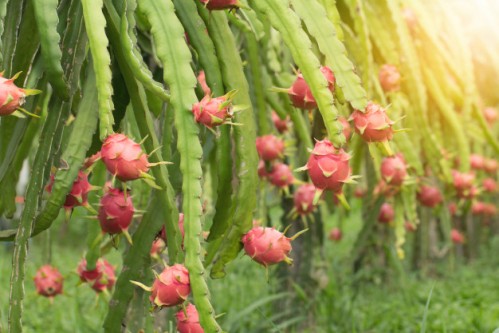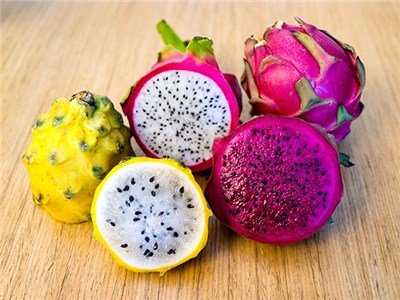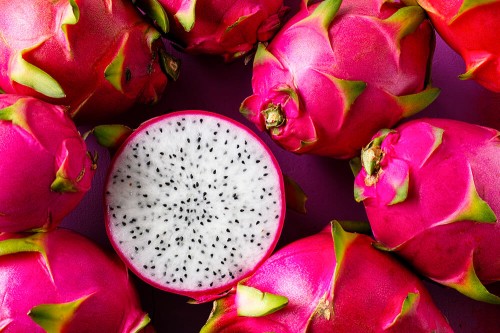Benefits of the Pitahaya
 28 Feb
28 Feb The pitahaya, also called dragon fruit, is a fruit that grows from a cactus. The fruit is ovoid, rounded and elongated; outside it can be yellow or red, while its flesh can be red or white with small black seeds. Originally coming from Mexico, Central- and South America, they are also grown in some countries in eastern Asia.
Etymology:
The word pitahaya is of Antillean origin and means “scaly fruit”.
In Vietnam, their name is Thanh Long (meaning dragon fruit) because the plant itself climbs on the trunks of other trees and interlaces giving the impression of a climbing dragon, a mythological animal very popular in Asia, mainly in China.

There are three types of Pitahaya:
- Hylocereus undatus with white flesh and a pink-red skin
- Hylocereus polyrhizus with red flesh and a pink-red skin
- Selenicereus megalanthus with white flesh and a yellow skin (this one is the sweetest!)

Nutritional value per 100 grams:
- 240 kJ (57 kcal)
- 16 g of carbohydrates
- 0 g of total lipid fat
- 3,57 g of protein
- 8.8 mg of calcium
- 0.65 mg of iron
- 0.045 mg of vitamin B1
- 9 mg of vitamin C
- 0.9 g of fiber

Benefits of the Pitahaya:
- The seeds contain many nutrients like omega 3s and omegas 6s.
- The fruit itself contains lycopene, which has anti-cancer properties.
- It controls blood sugar
- It has a low glycemic index
- It stimulates a proper digestion
- It helps in weight loss
- It controls cholesterol
- It contains Anti-aging properties
- It contains protecting benefits against heart disease issues
Did you know: The flower of the pitaya cactus is the biggest from all cactus varieties!

 Igor the Flamingo, representing our exotics of the Belleza brand!
Igor the Flamingo, representing our exotics of the Belleza brand!
Share this message


